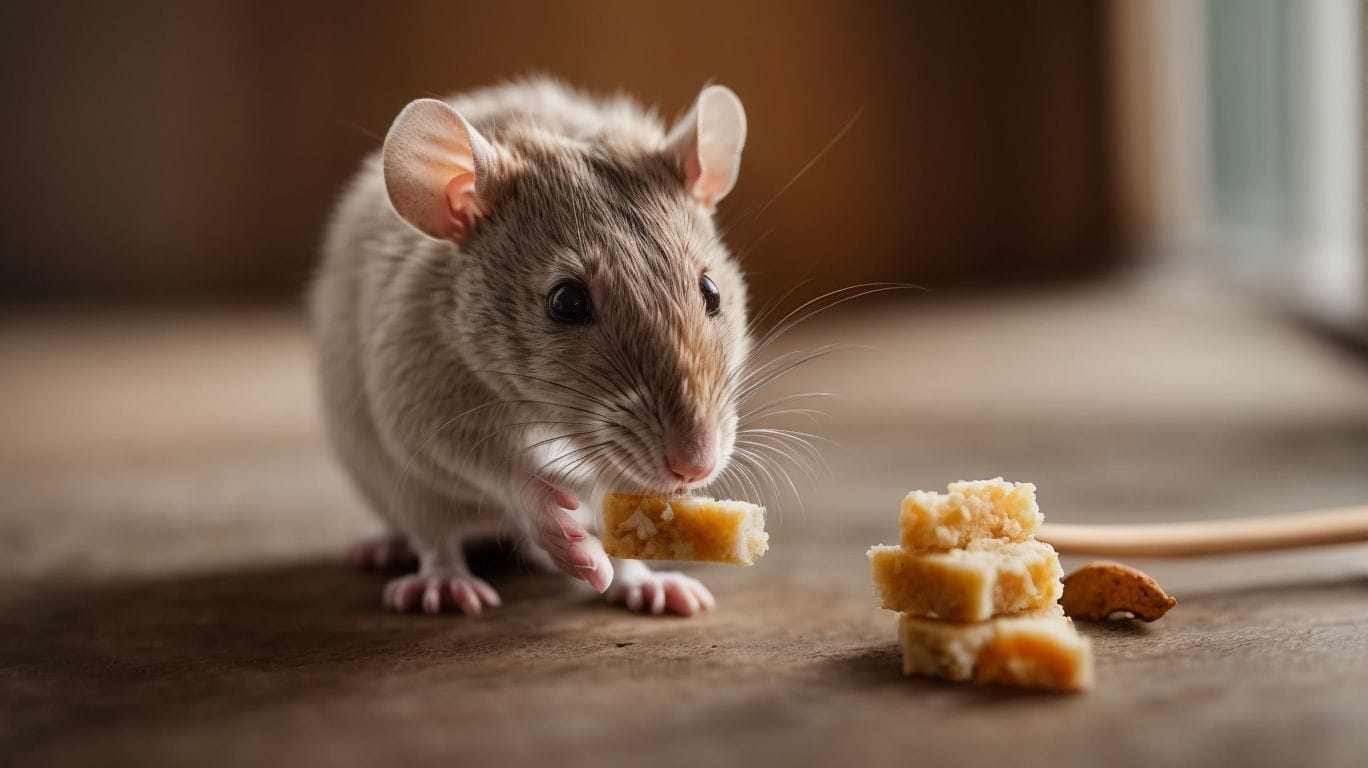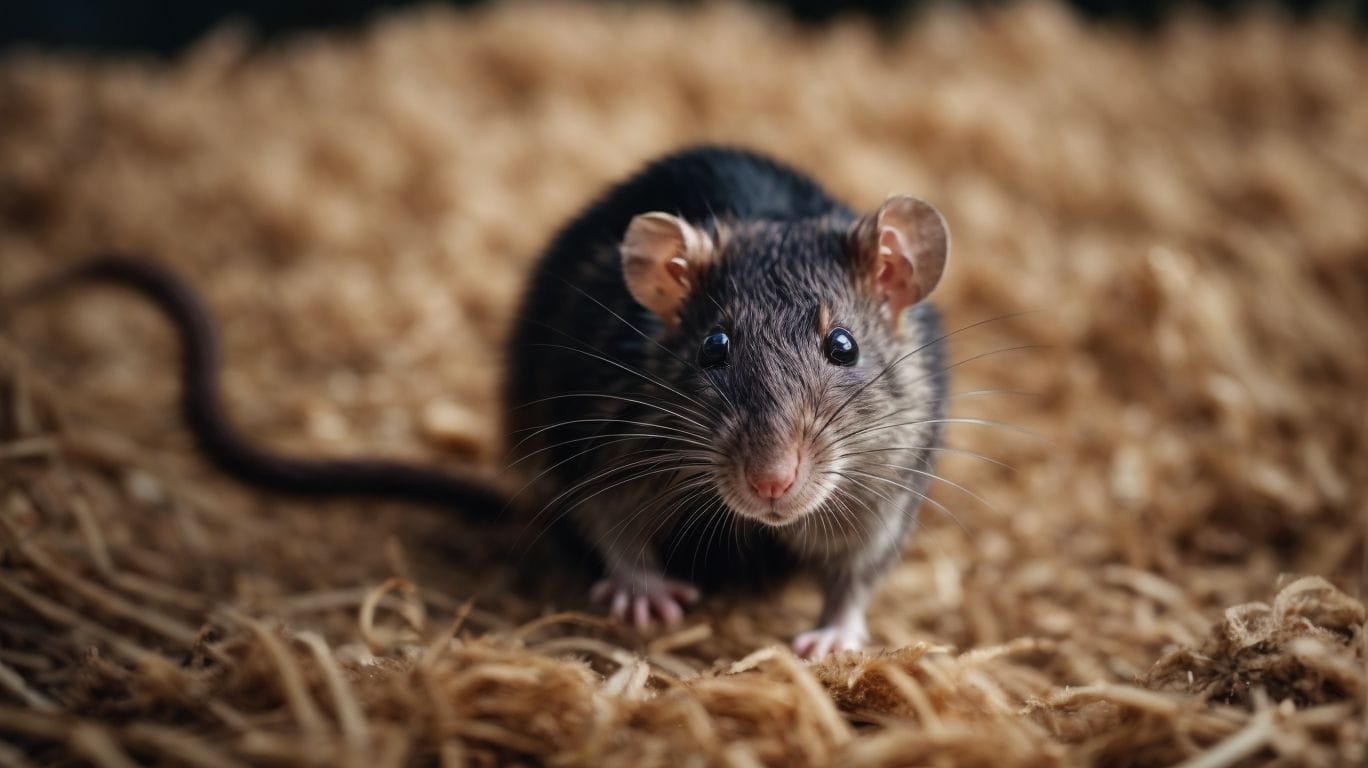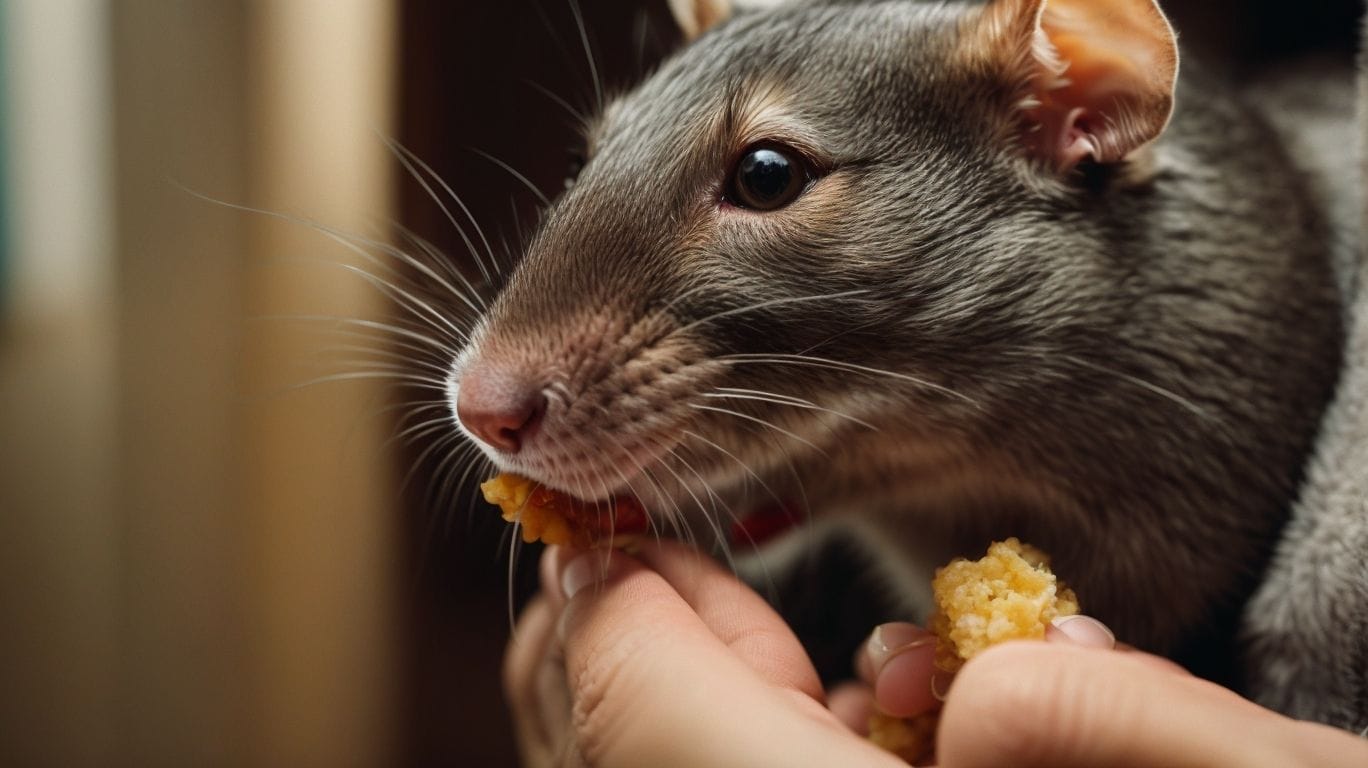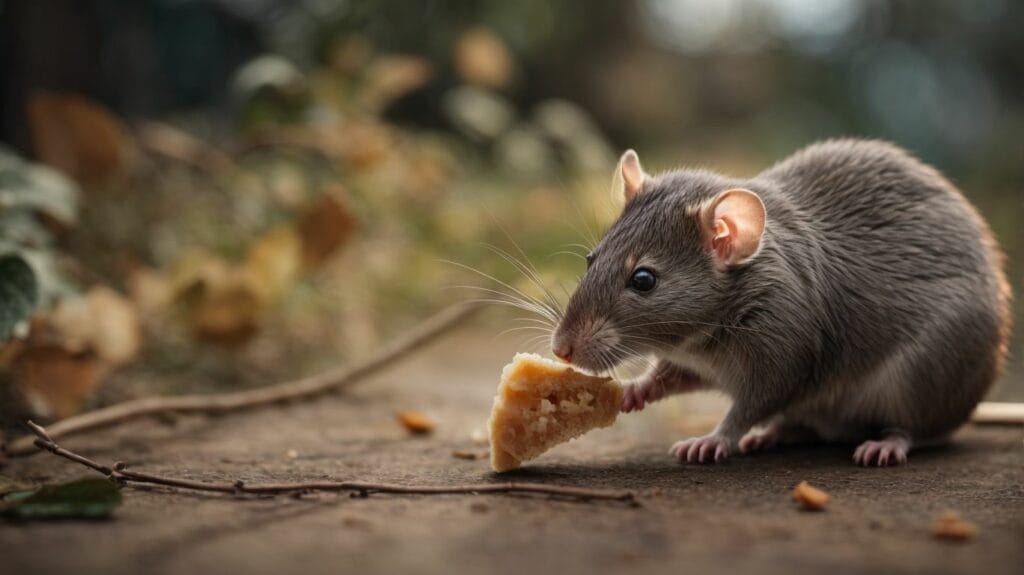Pet rats are adorable and intelligent companions, but just like any other animal, they have the potential to bite. Understanding why pet rats bite and how to prevent it is essential for a harmonious relationship with your furry friend. Here are some insights on the topic:
Why Do Pet Rats Bite?
- Natural Behavior: Rats have instinctual behaviors, including nibbling and playbiting, a form of communication.
- Fear or Anxiety: Rats may bite if they feel threatened or scared. It’s important to create a calm and safe environment for them.
- Lack of Socialization or Training: Proper socialization and training from a young age can help reduce the likelihood of aggressive behavior in pet rats.
Signs of Aggression in Pet Rats
- Hissing or Lunging: Rat may hiss or lunge when they feel threatened or defensive.
- Raised Fur or Flattened Ears: These are signs of aggression or discomfort.
- Tail Wagging: Tail wagging could be a warning sign that the rat is agitated and may bite.
Tips for Preventing Rat Bites
- Proper Handling Techniques: Learn how to handle and interact with your rat to avoid unnecessary stress or fear.
- Socialization and Bonding: Spend time regularly with your rat, providing opportunities for socialization and building trust.
- Offering Enrichment and Mental Stimulation: Provide stimulating toys and activities to keep your rat mentally engaged and content.
What to Do If Your Rat Bites?
If your rat bites, it’s important not to panic. Stay calm and gently remove yourself from the situation. Clean the wound thoroughly and seek medical attention if necessary. Assess the bite’s potential cause and address any underlying issues.
You can foster a safe and enjoyable relationship with your pet rat by understanding the reasons for biting, recognizing signs of aggression, implementing preventive measures, and responding correctly if a bite occurs. Remember, with patience and proper care, biting incidents can be minimized, and a strong bond can be developed with your furry companion.
Key Takeaways:
- Pet rats may bite due to natural behavior, fear, anxiety, or lack of socialization or training.
- Signs of aggression in pet rats include hissing, lunging, raised fur, flattened ears, and tail wagging.
- To prevent rat bites, use proper handling techniques, provide socialization and bonding, and offer enrichment and mental stimulation to keep rats healthy and happy.
Why Do Pet Rats Bite?

Photo Credits: Petnarnia.Com by Bruce Brown
Curious about why pet rats bite? Let’s dig into the reasons behind this behavior. From their instincts to any underlying fear or anxiety, we’ll uncover the factors contributing to rat biting. We’ll discuss how a lack of socialization or training may play a role. Get ready to explore the fascinating world of pet rat behavior and gain a better understanding of why they sometimes resort to nibbling.
1. Natural Behavior
Pet rats biting is an innate behavior typically associated with fear, anxiety, or lack of socialization. This behavior can be comprehended by observing the indications of aggression in pet rats, such as hissing or lunging, raised fur or flattened ears, and tail wagging. To prevent rat bites, it is essential to utilize proper handling techniques, ensure socialization, and provide enrichment and mental stimulation. If your rat does bite, it is advisable to seek medical attention if necessary, evaluate the situation, and offer comfort and positive reinforcement. Always remember that comprehending and addressing the natural behavior of pet rats is crucial in maintaining a harmonious relationship with these endearing creatures.
2. Fear or Anxiety
Fear or anxiety is one of the main reasons why pet rats may resort to biting as self-defense. When rats feel threatened or scared, it’s a natural response for them to exhibit this behavior. It’s important to note that biting is not a sign of aggression in these situations. To effectively address fear or anxiety-related biting, the key is establishing a calm and secure environment for your pet rat. Take the time to socialize and bond with them, provide mental stimulation through enrichment activities, and handle them with gentleness and confidence. You can help alleviate their fears and minimize biting incidents by showing patience and care.
3. Lack of Socialization or Training
- Lack of socialization or training is a common factor that can contribute to pet rats biting. Without proper socialization, rats may not learn how to interact appropriately with humans or other rats, leading to fear or aggression. Similarly, inadequate training can result in behavioral issues, as rats may not understand positive handling techniques or appropriate boundaries.
- To prevent rat bites related to a lack of socialization or training, handling your rat gently and consistently to build trust and familiarity is important. Doing so can help your rat learn how to interact with humans positively and reduce the chances of aggressive behavior.
- Additionally, providing opportunities for socialization with other rats and humans is crucial. Gradually introducing new experiences can help your rat become more comfortable with different situations and reduce the likelihood of fear-induced biting. This can be done by arranging supervised playdates with other rats or exposing your rat to new people in a controlled manner.
- Furthermore, offering mental stimulation through toys, puzzles, and positive reinforcement training sessions can prevent rat bites. These activities help keep your rat’s mind engaged, prevent boredom, and promote positive behaviors. Teaching your rat appropriate boundaries and rewarding good behavior can minimize the chances of biting incidents.
Signs of Aggression in Pet Rats

Photo Credits: Petnarnia.Com by Noah Thompson
If you’ve ever wondered whether pet rats can be aggressive, look no further. In this section, we explore the signs of aggression in pet rats and how to identify them. From hissing and lunging to raised fur and flattened ears, these behaviors can indicate a rat’s displeasure. And if you think tail wagging is always a sign of happiness, think again. We’ll uncover the truth behind this seemingly innocent behavior. Get ready to decode the signals and understand your furry friends on a new level!
1. Hissing or Lunging
When pet rats exhibit hissing or lunging behaviors, it is crucial to comprehend their actions and address any underlying issues that may be causing such behaviors. Several factors can contribute to rats hissing or lunging, including fear or anxiety, territorial instincts, or feeling threatened. To effectively deal with this behavior, consider the following tips:
- Ensure that the surrounding environment is calm and quiet, as this helps to reduce stress levels.
- Gradually introduce your rat to new experiences and positive interactions to help them become more socialized.
- Offer plenty of enrichment activities and mental stimulation to keep your rat engaged and prevent boredom.
- Seek guidance and additional advice from a veterinarian or a professional rat behaviorist.
By implementing these strategies, you can assist your pet rat in feeling more secure and minimize instances of hissing or lunging. Remembering that rats require time and patience to adjust to new situations is important, so practice patience and understanding throughout the process.
2. Raised Fur or Flattened Ears
Raised fur and flattened ears are common signs of aggression or fear in pet rats. These behaviors indicate that the rat is feeling threatened or defensive. It is important to understand these signals to prevent bites and ensure your pet’s well-being. Here are some steps to take if you observe these behaviors in your pet rat:
- Observe the rat’s body language and environment to identify the cause of fear or aggression.
- Give your rat space and time to calm down, avoiding sudden movements or loud noises.
- Avoid touching or handling the rat until it has relaxed and returned to normal behavior.
Understanding and responding to these signs can help create a safe and nurturing environment for your pet rat.
In 2018, a pet rat named Benny displayed raised fur and flattened ears when introduced to a new cage mate. After careful observation and gentle introduction techniques, Benny and his new friend formed a strong bond and lived together harmoniously. Benny’s story serves as a reminder of the importance of understanding and addressing your pet rat’s behavior to ensure their well-being and happiness.
3. Tail Wagging
Tail wagging in pet rats can signify several different emotions or behaviors. Rat owners need to understand the meaning behind this behavior to ensure the well-being of their furry friends.
- Excitement: Tail wagging can indicate a rat’s excitement, especially during playtime or when interacting with their favorite toys.
- Curiosity: Rats may wag their tails while exploring their surroundings and investigating new objects or scents.
- Aggression: Although rare, tail wagging can signify aggression in pet rats. If accompanied by other aggressive behaviors, such as hissing or lunging, it is important to address the underlying cause and seek professional advice.
Understanding the context and accompanying behaviors alongside tail wagging can help rat owners interpret their pets’ emotions and respond appropriately.
Tips for Preventing Rat Bites

Photo Credits: Petnarnia.Com by Tyler Gonzalez
Are you looking to steer clear of those potential nibbles? Check out these handy tips for preventing rat bites. Learn proper handling techniques, the importance of socialization and bonding, and how to offer enrichment and mental stimulation to keep your furry companion happy and less prone to nibbling. Stay tuned for valuable insights on rat behavior that will help you foster a safe and enjoyable relationship with your pet rat.
1. Proper Handling Techniques
Proper Handling Techniques are of utmost importance when preventing rat bites and ensuring a positive interaction with your pet rat. To safely handle your pet rat, follow these steps:
- Approach your rat calmly and confidently, avoiding any sudden movements.
- Place your hand under the rat’s body, supporting its weight.
- Lift the rat gently, keeping it close to your body to ensure its security.
- Allow the rat to explore within a safe area without restraining its movements.
- While handling, maintain a firm grip on the rat, but be careful not to squeeze or apply unnecessary pressure.
- During handling sessions, offer treats and positive reinforcement to build trust and create a positive association.
- Regularly interact with your rat to promote socialization and prevent fear or aggression.
Remember, following Proper Handling Techniques is crucial for the well-being of both you and your pet rat.
2. Socialization and Bonding
Socialization and bonding are essential for preventing pet rats from biting. Here are some helpful tips:
- Ensure you handle your rat gently and frequently from a young age to cultivate trust and familiarity.
- Offer treats, toys, and interactive playtime to create positive experiences.
- Gradually introduce your rat to different environments, people, and animals.
- Utilize positive reinforcement, such as rewards and praise, to promote good behavior and discourage biting.
Patience and consistency are key to establishing a strong bond with your pet rat.
In an intriguing historical note, rats have been cherished as pets for centuries and were particularly popular companions during the reign of Queen Victoria in the 19th century. They even had elaborate rat houses and miniature replicas of human homes. This highlights the enduring bond between humans and pet rats.
3. Offering Enrichment and Mental Stimulation
Offering enrichment and mental stimulation is crucial for the well-being of pet rats. It is important to provide a stimulating environment that includes a variety of toys, hideouts and tunnels, obstacle courses, foraging activities, and training and tricks.
By offering a variety of toys, such as those that encourage exploration, chewing, and play, you can keep your pet rats mentally engaged and stimulated. Creating a maze-like setup with hideouts and tunnels also allows rats to explore and navigate, enhancing their mental stimulation.
Using cardboard boxes and tubes, setting up obstacle courses will challenge your rats’ agility and problem-solving skills. This provides a great opportunity for them to stay mentally active and engaged.
Foraging activities are another excellent way to offer enrichment. Hide treats or food in different areas of their enclosure to encourage natural foraging behavior. This not only keeps them physically active but also mentally stimulated.
Training your rats to perform simple tricks using positive reinforcement is a wonderful way to provide mental stimulation. Teach them tricks such as coming when called or jumping through hoops. This strengthens the bond between you and your rats and engages their minds.
Now, let’s dive into a fascinating historical fact about rats. They have been kept as pets for centuries and were considered royal pets in Ancient Egypt. These intelligent creatures were admired for their loyalty and ability to communicate with their human owners.
What to Do If Your Rat Bites?

Photo Credits: Petnarnia.Com by Stephen Lewis
Suppose your rat gives you an unexpected nibble; fear not! In this section, we’ll cover what steps to take if your pet rat decides to take a bite. From seeking medical attention if necessary to assessing the situation and offering comfort, we’ll explore the best ways to handle the aftermath of a rat nip. So, let’s dive into this paw-some guide and ensure a harmonious relationship with our adorable rodent companions!
Seek Medical Attention if Necessary
If a pet rat bites you, and the wound is severe, it is important to remember that seeking medical attention, if necessary, is crucial. Rat bites can cause infections, so it is essential to have medical professionals assess the wound and provide appropriate treatment. This may include cleaning the wound and, if required, prescribing antibiotics. If you notice symptoms of an infection after being bitten by a rat, such as redness, swelling, or pus, it is imperative to seek medical attention promptly. Remember, your health and well-being should always be a priority. Stay safe, and remember to seek medical attention if necessary.
Fun Fact: Did you know rats have been trained for certain tasks, like detecting landmines and tuberculosis in humans? Their exceptional sense of smell makes them unique animals for these purposes.
Assess the Situation
When dealing with a pet rat bite, it’s crucial to calmly and promptly assess the situation. Take a moment to carefully evaluate the severity of the bite by examining the wound for any bleeding or indication of infection. If the bite appears minor, meticulously wash it and apply an antiseptic ointment. However, seeking immediate medical attention is important in the case of more severe bites, as stitches or antibiotics may be required. In addition to evaluating the wound, assessing the rat’s behavior leading up to the bite is essential to comprehend the underlying cause. This understanding will help prevent future bites and foster a strong bond with your pet. Remember that when dealing with rats, always approach the situation with patience and understanding, as they may bite out of fear or discomfort. Remember to assess the situation at hand before taking any action.
Offer Comfort and Positive Reinforcement
Providing comfort and positive reinforcement is essential when dealing with rat bites. A pet rat bite can be stressful for the rat and the owner. Rather than reacting negatively, remaining calm and comforting the rat is important. This can be achieved by speaking softly and gently petting the rat to help alleviate any fear or anxiety. To promote better behavior in the future, positive reinforcement can be employed. Positive associations can be reinforced by offering treats or praise when the rat behaves well, decreasing the likelihood of future bites.
Some Facts About “Do Pet Rats Bite?”:
- ✅ Pet rats may bite as a form of communication or learned behavior. (Source: Small Pet Select)
- ✅ Reasons for biting include fear, fighting with other rats, sickness or pain, lack of human interaction, and territorial protection. (Source: Small Pet Select)
- ✅ Warning signs of biting include raised fur, hunched back, displaying teeth, and raised front paws. (Source: Small Pet Select)
- ✅ Solutions to stop biting include announcing arrival in a low voice, building trust through treats and slow interaction, avoiding interaction through enclosure bars, and squeaking loudly to communicate pain. (Source: Small Pet Select)
- ✅ Understanding the reasons behind the biting behavior can help address it appropriately. (Source: Small Pet Select)


